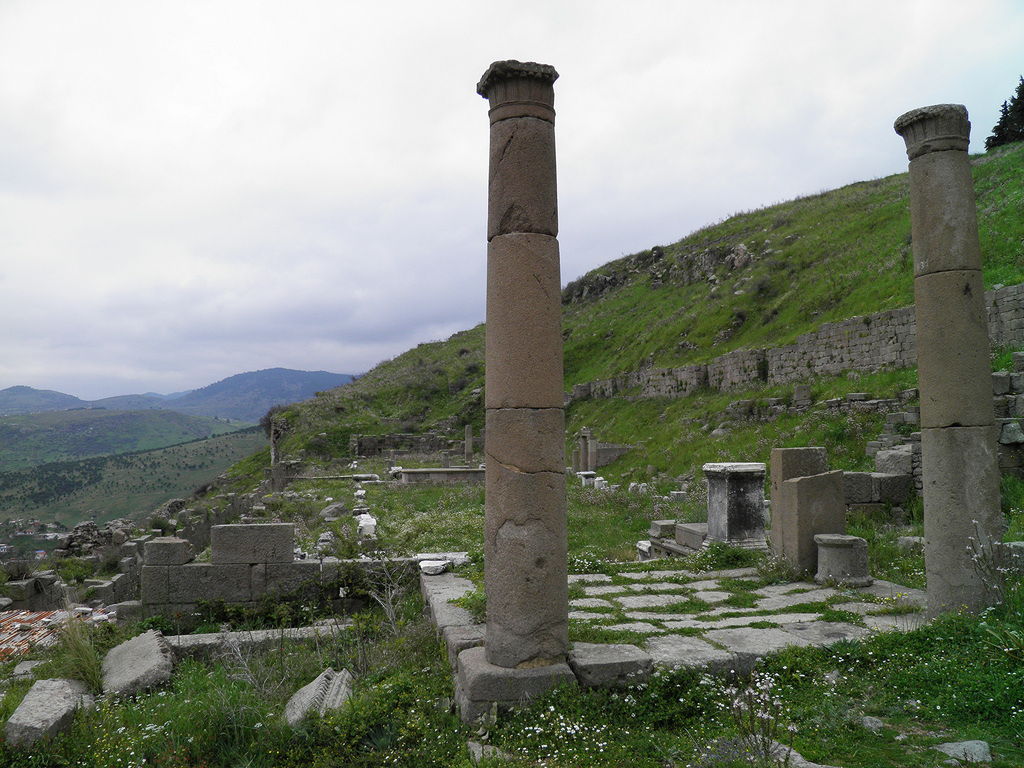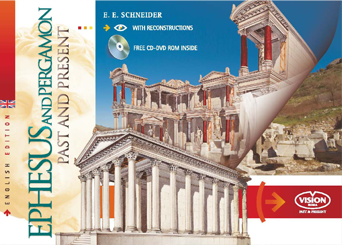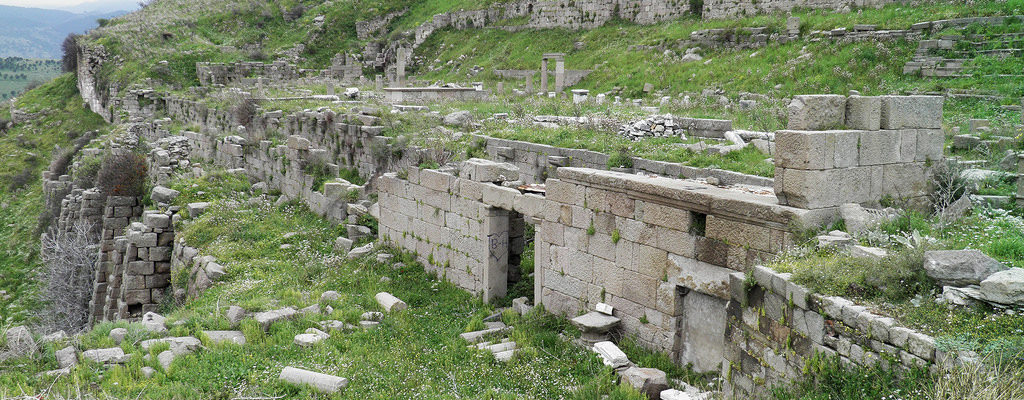The Sanctuary of Demeter occupies a vast rectangular terrace (100 x 50 meters), and is a construction dating from the Hellenistic Age, with reworkings during the Roman Age.
The entrance is on the southeast side, near a fountain and a sacrificial pit, used to collect the blood of the victims.
Surrounded by porticoes on three sides, the temenos has, on the side opposite the entrance, the temple dedicated to the goddess, originally in antis, of the Ionic order and later transformed into a Corinthian prostyle, distyle temple for Demeter, and Kore.
This change, made by Claudius Silanus Aesimus, a member of a large family of Palmyrene notables under Antoninus Pius, corresponds to a new, renewed interest, characteristic of the age, in the mystery cults that promised resurrection after death.
In front of the temple stand the large main altar and four smaller altars.
But the main interest and particularity of this sanctuary lies in the presence, to the northeast, of a theatron of ten tiers created to seat around 800 persons, enabling them to watch the ceremonies from a position separate from the crowd. This is the only religious building of such a large size in this quarter.
The other three temples – of Hera Basíleia, Asklepios (both from the Attalid period), and Hermes and Heracles, the gods of the gymnasium – date from the Roman Age and were open to the imperial cult, and are much smaller.
The second architectural nucleus of the intermediate city consists of an impressive gymnasium occupying three successive terraces. The upper terrace consists of a vast square surrounded by porticoes, built first of andesite and then redone in marble during the Roman Age, and used for gym exercises and ceremonies.

© Photo credits by Carole Raddato under CC-BY-SA-2.0
The center of the north side is occupied by an ephebeion, a place used for the physical exercise of youths, and an akroaterion, a small semicircular, stageless theatre used for the education of youths and therefore for conferences, concerts, etc.
The inscriptions found there bear witness to the presence of conference-goers who came to speak on various subjects, of doctors evidently connected with the presence of the Asklepieion, of philosophers, rectors, poets, and astronomers.

Do you want to know more about the history of Ephesus and Pergamon?
Check out our guidebook to Ephesus and Pergamon, with detailed history and Past & Present images of their greatest historical and archaeological sites.

